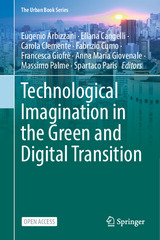Приказ основних података о документу
Industrial Heritage of Belgrade: Brownfield Sites Revitalization Status, Potentials and Opportunities Missed
| dc.creator | Pavlović, Jelena | |
| dc.creator | Šabanović, Ana | |
| dc.creator | Ćuković Ignjatović, Nataša | |
| dc.date.accessioned | 2023-11-28T09:59:05Z | |
| dc.date.available | 2023-11-28T09:59:05Z | |
| dc.date.issued | 2023 | |
| dc.identifier.isbn | 978-3-031-29514-0 | |
| dc.identifier.isbn | 978-3-031-29515-7 (eBook) | |
| dc.identifier.issn | 2365-757X | |
| dc.identifier.issn | 2365-7588 (electronic) | |
| dc.identifier.uri | https://raf.arh.bg.ac.rs/handle/123456789/1709 | |
| dc.description.abstract | Being created during the period of intensive industrialization, industrial buildings and landscapes carry importance as birth places of rapid technological progress, social and economic changes, which has established their great significance for modern human history and identity. Termination of their active function causes symptoms of decline to appear gradually, and their number decreases as the time passes. They are often endangered regardless of their protection status. Implementation of adaptive reuse principles allows for less strict approach to conservation practice, and its benefits are demonstrated worldwide. Despite that fact, industrial heritage has not been revitalized enough through adequately treated sites in Serbia. That indicates lack of understanding of the value of this cultural and historical heritage, as well as its suitable future purposes, impossible without some form of active dialog between participants in the planning process. The legal preconditions for this collaboration exist in Serbian regulations, and they are examined in the paper, but other potential causes of the lack of consensus that result in failure are also explored. In Belgrade, industrial brownfields occupy attractive locations, often targeted for market-driven redevelopment. For that reason, the paper explores current practice of revitalizing brownfield sites of industrial heritage in Belgrade. It considers the achievements, probable missed opportunities, and remaining potentials where acquired knowledge can be utilized. Key results of the research define critical points in the planning process for the preservation of values despite the modernity of brownfield sites transformations. The purpose of this paper is to help safeguard industrial landscapes of Belgrade and Serbia, and their sustainable conversion, the most adequate for the present moment, as well as to contribute to urban reconstruction of declining landscapes to which these brownfield sites belong. | sr |
| dc.language.iso | en | sr |
| dc.publisher | Springer | sr |
| dc.relation | info:eu-repo/grantAgreement/MESTD/inst-2020/200090/RS// | sr |
| dc.rights | openAccess | sr |
| dc.rights.uri | https://creativecommons.org/licenses/by/4.0/ | |
| dc.source | Technological Imagination in the Green and Digital Transition. CONF. ITECH 2022. The Urban Book Series | sr |
| dc.subject | Sustainability | sr |
| dc.subject | Industrial heritage | sr |
| dc.subject | Brownfield | sr |
| dc.subject | Revitalization | sr |
| dc.title | Industrial Heritage of Belgrade: Brownfield Sites Revitalization Status, Potentials and Opportunities Missed | sr |
| dc.type | conferenceObject | sr |
| dc.rights.license | BY | sr |
| dcterms.abstract | Шабановић, Aна; Ћуковић Игњатовић, Наташа; Павловић, Јелена; | |
| dc.citation.spage | 831 | |
| dc.citation.epage | 842 | |
| dc.description.other | The research is done under research lab SaRA (Sustainable and Resilient Architecture), University of Belgrade—Faculty of Architecture. | sr |
| dc.identifier.fulltext | http://raf.arh.bg.ac.rs/bitstream/id/5467/bitstream_5467.pdf | |
| dc.identifier.rcub | https://hdl.handle.net/21.15107/rcub_raf_1709 | |
| dc.type.version | publishedVersion | sr |

